Argentina's ruling party has been going through an identity crisis since 2015. That year, after 12 years of Kirchnerite government rule, Peronism lost the general election to the leader of a force created just a decade earlier.
Ruling parties are those in which ideas may change but their lust for power may not. They are also called "partidos de la ola," (“trending parties”) because of their ability to alter their principles to adapt to international political trends with the ultimate goal of staying in government. Argentina’s Peronist Partido Justicialista (PJ), Mexico's Partido Revolucionario Institucional (PRI) and China's Communist Party are good examples of this phenomenon.
The PJ's identity crisis began in 2010, with the death of former president Néstor Kirchner, the founder of the Kirchnerite current which imposed itself on the more traditional form of Peronism represented by former president Carlos Menem and other historic leaders of the party and trade unionism.
Kirchner died too soon, at the age of 60. It is difficult to guess whether, if he had remained alive, he would have promoted a line of succession beyond his own wife. But what is certain is that, without him, his only presidential heir was Cristina Fernández de Kirchner.
The lack of another heir meant that in 2015, Kirchnerism had to turn to then Buenos Aires Province governor Daniel Scioli and present him as the Peronist candidate, a figure who was alien to the cultural and ideological origins of the Kirchner couple and with whom they had many clashes.
Even so, after more than a decade of government wear-and-tear and meagre economic growth ( 1.5 percent of gross domestic product) in Cristina's second term in office, Scioli still won in the first round and lost the presidential run-off against Mauricio Macri by only two points.
Facing the same lack of natural heirs (and aware of her high negative image), in 2019 Fernández de Kirchner had to resort once again to a candidate from outside her ranks, picking former Cabinet chief Alberto Fernández to head the Peronist presidential ticket. She also agreed to ally herself with Sergio Massa, an experienced politician who, like Fernández, had been a tough adversary in the recent past.
The movement’s identity crisis was symbolised by the creation of an electoral coalition whose main leaders (Cristina Fernández de Kirchner, Alberto Fernández and Massa) were all Peronists but whose actions and ideas seemed to belong to different parties. It was a Peronist coalition which, for the first time, was not commanded by a hegemonic leader of the movement.
Cristina, we cannot forget, is the mother of Kirchnerism, but by 2019 the other two (who in 2003 had been part of the traditional Peronist movement subsumed by Kirchnerism) had distanced themselves from her. Her sector had lost its monopoly grip on Peronism precisely because it had lost the ability to keep it in power through an undisputed leader.
Between 2019 and 2023, internal disputes resulted in a regrouping of forces: Cristinismo (represented by the vice-president herself, the La Cámpora political youth organisation, Buenos Aires Province Governor Axel Kicillof and others) versus the traditional Kirchnerites and Peronists (the president, Massa and most of the governors and trade unionists).
Today, Peronism faces both old and new challenges. Among the first is the fact that Cristina remains the last natural heir of Néstor Kirchner and that rejection of her image has not diminished. The only aspirant to the presidential inheritance is Kicillof, who until very recently preferred to run for re-election as governor rather than compete in the national elections.
The difficulty the founders of Kirchnerism face in promoting new leadership is neither strange nor unprecedented. Former presidents Hipólito Yrigoyen (1916-1922; 1928-1930), Juan Perón (1946-1955; 1973-1974), Raúl Alfonsín (1983-1989) and Menem (1989-1999) demonstrated the same inability to generate political heirs with sufficient national projection to take their places.
When leaders are so strong and dominant, it is, quite reasonably, difficult for others to grow in their shadow. For this reason, Peronism’s current dilemma is to find a competitive candidate.
With the vice-president at the helm, Cristinismo seems to continue to be the sector attracting the greatest number of votes, especially in the Conurbano encircling the City of Buenos Aires. Its problem is that it lacks its own candidate – and one who could win.
Peronism does not have an obvious candidate either: the president has dropped out and Massa is still not on board. Scioli, Cabinet Chief Agustín Rossi and Chaco Province Governor Jorge Capitanich have just begun a slow process of installing themselves as potential options.
The other dilemma is how a Frente de Todos candidate would present himself or herself to society. This is the fundamental problem, revealing the identity crisis facing Peronism.
As the president’s time in office draws towards its conclusion, we can conclude that the coalition which was successful in coming to power in 2019 has proven to be unsuccessful in governance. The need to form that coalition already revealed that there was nobody with the capacity to guarantee a victory on their own. What happened afterwards confirmed the other coalition leaders' questioning of the former leader's authority.
This was Cristina's complaint over the years: an economic model not hers was imposed on her. However, what actually happened was that the model applied tried to be a synthesis arising from the pressures of each internal sector. And it ended up being a mixture satisfying nobody.
Two alternatives are now open, neither of them simple: 1) Cristinistas and Peronistas compete in a PASO primary. This would be the first opportunity for either side to measure their forces democratically. According to the polls, neither of the two sectors would then have a chance of winning the general elections but whoever wins the internal elections would have more legitimacy in heading Peronism; 2) The identification of a ‘unity’ candidate. The only way there would be no competitive primary is if a candidate emerges with the full or partial support of Cristina Fernández de Kirchner and who, at the same time, is considered competitive by the rest of Peronism. This, for example, could not be Interior Minister Eduardo ‘Wado’ de Pedro, but it could still be Sergio Massa.
What is under discussion here is much more than a candidacy. It is the search for a new leader who, on their own and without intermediaries, is competitive enough to assume power and unify Peronism. In the search for this new hegemonic leadership, they will have to debate (right now) which is the best model to apply.
Would Massa's model be more similar to that of the vice-president? Or would it be similar to that proposed by his friend, City Mayor Horacio Rodríguez Larreta? Would Cristinismo present a plan of government or, if resigned to defeat, would it only aspire to detach itself from Alberto and prepare for a spell in opposition? Would some resort once again to a presidential ticket topped by a Peronist and seconded by a Cristinista representative (Massa-De Pedro, for example), at the risk of the majority rejecting a game which has already proved unsuccessful?
Since 2003, Kirchnerism has given Peronism a new identity. But since 2015, that identity has been in crisis. The question today is where this ruling party – which throughout its history has been more statist, less statist, more liberal, less liberal – is going to turn.
Cristinistas and Peronistas are competing to impose a new internal hegemony. It has never been the case that ideological shifts emerge after arduous internal debate resulting in a transcendental synthesis. This time will be no exception.
That is why the next major shift, and Peronism’s next identity, will only appear after one sector imposes itself over the other. And that is what they are working on.













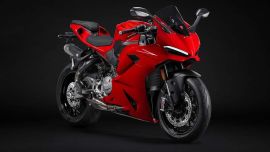
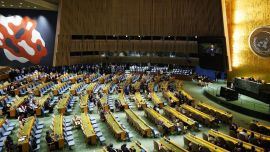
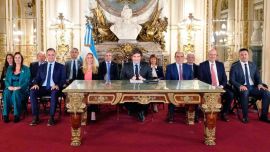
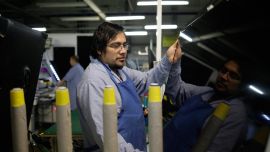
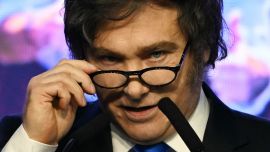
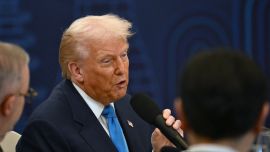
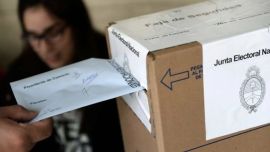
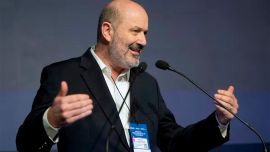


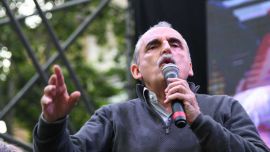
Comments